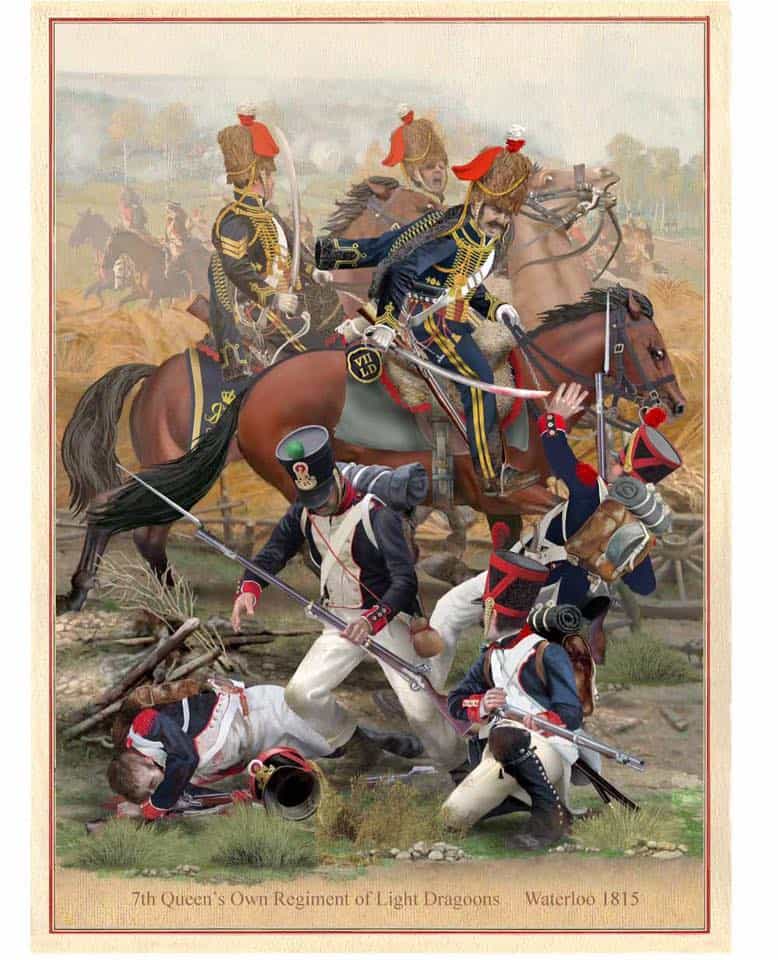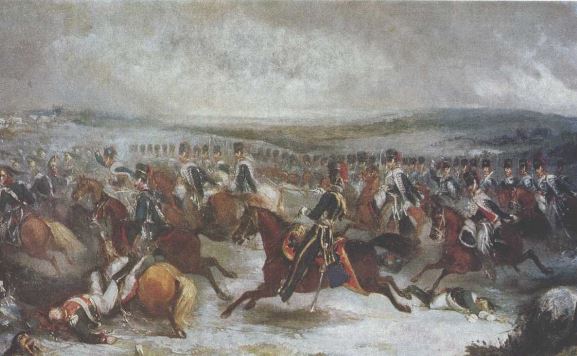Waterloo
The Battle of Waterloo, which took place in Belgium on June 18, 1815, marked the final defeat of Napoleon Bonaparte, who conquered much of Europe in the early 19th century. Napoleon rose through the ranks of the French army during the French Revolution, seized control of the French government in 1799 and became emperor in 1804. Through a series of wars, he expanded his empire across western and central Europe. The Battle of Waterloo, in which Napoleon’s forces were defeated by the British and Prussians, marked the end of his reign and of France’s domination in Europe.
The Honour is borne on the Guidon of the 7th Hussars.
Detail
On the eve of the Battle of Waterloo the 7th charged on the advancing enemy, the French 2nd regiment of lancers in the action at Genappe.
The 7th was the only British regiment to suffer significant casualties on the 17th of June – the day between Quatre Bras and Waterloo.
At Genappe they skirmished with French lancers. It was a filthy day, witnesses describing men and horses covered from head to toe in mud so that the colours of their uniforms were indistinguishable.

After a spirited and fearless succession of charges, only nineteen of the 120 men of the 7th Hussar squadron were left in the saddle.
For the Battle of Waterloo itself, the 7th was on the extreme right of the allied line, 300 yards north of the Chateau of Hougoumont.
Until 5 pm they were not used, but then they charged more than twelve times. Standish O’Grady, 2nd Viscount Guillamore, then a lieutenant in the 7th Hussars mentions is a letter to his father: “We charged twelve or fourteen times, and once cut off a squadron of cuirassiers, every man of whom we killed on the spot except the two officers and one Marshal de Logis, whom I sent to the rear”.
In 24 hours the 7th Hussars had lost two officers killed, and eleven wounded, sixty-two other ranks killed and 109 wounded, while Uxbridge lost his leg to enemy artillery.


